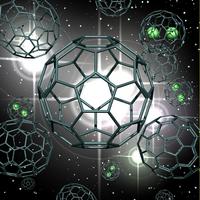There’s an opportunity to interact with Nobel prize winner in Chemistry Sir Harry Kroto via the Nobel Prize’s YouTube channel and its Facebook page. From the news item on Nanowerk,
Harry Kroto, awarded the Nobel Prize in Chemistry 1996, is the latest to take part in the “Ask a Nobel Laureate” series on YouTube and Facebook. “Ask a Nobel Laureate” gives online viewers worldwide the unique opportunity to put their questions directly to a Nobel Laureate and see the responses.
Harry Kroto received the Nobel Prize in Chemistry in 1996 with Robert Curl and Richard Smalley for the discovery of C60, a remarkable molecule composed of 60 carbon atoms arranged in a soccer-ball-like pattern. The configuration reminded Kroto of the futuristic geodesic domes designed by Richard Buckminster Fuller, and consequently C60 was given the name “buckminsterfullerine”, otherwise known by its more popular name of “buckyballs”.
You have until Sept. 4, 2010 to submit your questions via the Nobel Prize YouTube channel (where you will find a 3 minute video introduction to Sir Harry Kroto) or the Nobel Prize FaceBook page.
Video or text questions will be accepted (though video questions are preferred), and you can visit the channels to see questions that have already been posted and vote for your favourite ones. The deadline for submitting questions is 4 September 2010. Harry Kroto will then answer a selection of questions, and his answers will be broadcast on [the Nobel Prize] YouTube channel.
You can find out more about Sir Harry Kroto’s Nobel Prize here.
This item caught my attention since I’ve been noticing an increase in the number of news items about Rice University and/or the folks associated with the discovery of buckyballs. For example, Nanowerk has another news item about Rice University’s new state-of-the-art nanotechnology overview course (Continuing Studies) being launched in concert with Rice’s Year of the Nano 25th anniversary celebration of the discovery of the buckyball. From the news item,
In conjunction with Rice’s Year of Nano celebration of the 25th anniversary of the buckminsterfullerene molecule discovery – the buckyball – the Glasscock School is offering a course to the public featuring lectures by Rice’s top nano scientists. The course will cover applications of nanotechnology and the underlying scientific principles that relate to medicine, electronics, materials and energy. Participants will explore the environmental, health and safety aspects of nanotechnology, how Rice is leading the way in understanding and assessing the risks and how applications are brought to market and create jobs.
First among the lecturers is one of the buckyball’s discoverers, Robert Curl, Rice’s University Professor Emeritus and Kenneth S. Pitzer-Schlumberger Professor Emeritus of Natural Sciences, who shared the Nobel Prize with the late Richard Smalley of Rice and Harold Kroto, then of the University of Sussex and now at Florida State University. [emphasis mine]
Curl will discuss the team’s work and subsequent impact of the buckyball, a 60-atom carbon molecule shaped like a soccer ball and one of the hardest substances in the universe. Wade Adams, director of Rice University’s Smalley Institute for Nanoscale Science and Technology, co-sponsor of the course, will join Curl for the presentation.
So the “Ask a Nobel Laureate” series focus on Sir Harry Kroto comes at an interesting time, non?
Really good public relations (pr) practice can be quite subtle and difficult if not impossible to detect unless you are in ‘the know’. So this Nobel YouTube/FaceBook interaction with Sir Harry K. may be happy coincidence or part of a pr campaign.
Stuart Ewen wrote a book titled, PR! A Social History of Spin, where he discusses a lengthy interview he had with Edward Bernays one of the pioneers in US public relations. Before I tell the story it’s best to know a little more about Bernays. From PR Watch.org (book review by John Stauber and Sheldon Rampton),
Today, few people outside the public relations profession recognize the name of Edward L. Bernays. As the year 2000 approaches, however, his name deserves to figure on historians’ lists of the most influential figures of the 20th century.
It is impossible to fundamentally grasp the social, political, economic and cultural developments of the past 100 years without some understanding of Bernays and his professional heirs in the public relations industry. PR is a 20th century phenomenon, and Bernays–widely eulogized as the “father of public relations” at the time of his death in 1995–played a major role in defining the industry’s philosophy and methods.
Eddie Bernays himself desperately craved fame and a place in history. During his lifetime he worked and schemed to be remembered as the founder of his profession and sometimes drew ridicule from his industry colleagues for his incessant self-promotions. These schemes notwithstanding, Bernays richly deserves the title that Boston Globe reporter Larry Tye has given him in his engagingly written new book, The Father of Spin.
…
Bernays’ life was amazing in many ways. He had a role in many of the seminal intellectual and commercial events of this century. “The techniques he developed fast became staples of political campaigns and of image-making in general,” Tye notes. “That is why it is essential to understand Edward L. Bernays if we are to understand what Hill and Knowlton did in Iraq–not to mention how Richard Nixon was able to dig his way out of his post-Watergate depths and remake himself into an elder statesman worthy of a lavish state funeral, how Richard Morris repositioned President Bill Clinton as an ideological centrist in order to get him reelected, and how most other modern-day miracles of public relations are conceived and carried out.”
Ewen’s book published in 1996 likely features one of Bernays’ last interviews and fascinating insight into how pr can work. Partway through the interview Ewen asks Bernays for a practical example of how he practices pr and Bernays uses Ewen’s forthcoming book as the example. From the website where Dr. Ewen sells his book and offers chapter 1 as a reading sample,
If you said to me, ‘I would like more readers of this book’ [tapping the cover] …I would immediately get in touch with the largest American consumer association. And I would say to the head of the consumers association, ‘There are undoubtedly…I can’t tell you the exact percentage, but X percentage of your members who are very definitely interested in the images that come from a finance capitalist society, and who I think would enjoy hearing about that. Why don’t you devote one of your twelve meetings a year to consumer images, the name of a new book, and I think it may be possible for me to get the author to talk to the New York meeting and you then make an arrangement with American Tel and Tel and have a video tape made of him beforehand and in thirty of the largest cities of the United States that have the American Consumer League, you listen to an in-depth concept of consumers and images….’
Then Bernays turned to me and, with an abracadabra tone in his voice, he summarized the imaginable result of his hypothetical phone-call to the head of the country’s largest consumer association:
Every one of the consumer groups has contacts with the local paper, and in some cases the AP may pick it up, or Reuters, and you become an international star!
…
Then, about three months after the interview-the above incident having faded from my immediate memory-I received a most surprising telephone call. It was from Steven Brobeck, president of the Consumer Federation of America, one of the nation’s largest and most influential consumer organizations. Mr. Brobeck wanted to know if I would be willing to serve as a keynote speaker at the upcoming Consumer Congress in Washington, DC, a convention that would bring together more than a thousand members of consumer organizations from around the country. He wanted me to speak about American consumer culture and the ways that seductive commercial images are routinely employed to promote waste and disposability. C-Span, I was informed, would be taping my keynote, and would then cablecast it across the country.
I still do not know whether Bernays’ hand was behind this invitation, or whether the phone call was merely a result of sly coincidence. When I inquired as to the origin of the invitation, nowhere was there any clear-cut, or even circumstantial, evidence of Bernays’ intervention.
But then I recalled another point in our lengthy conversation, when Bernays sermonized on the invisibility with which public relations experts must, ideally, perform their handiwork. [emphasis mine]
Props to the folks at Rice if they are practicing some invisible pr.
I’ve written about Rice and their Year of the Nano before, May 13, 2010 and August 3, 2010.


